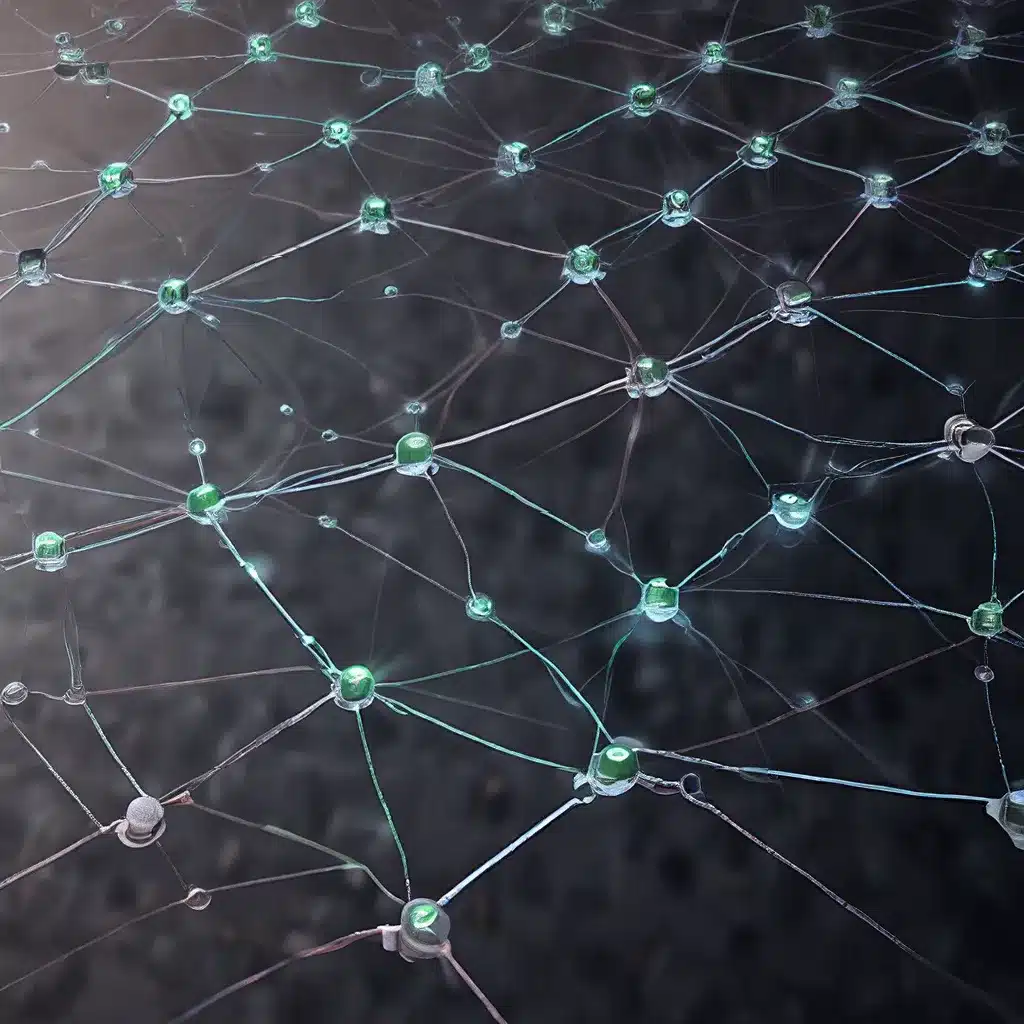
The Evolving Landscape of Sensor Networks
In the dynamic world of Internet of Things (IoT), sensor networks have emerged as the backbone, enabling a seamless flow of data from the physical to the digital realm. As these networks grow in complexity and scale, the need for energy-efficient and distributed algorithms has become paramount. This article delves into the cutting-edge research and practical applications of such algorithms, exploring their role in shaping the future of sensor networks and IoT.
Sensor networks are the bedrock of IoT, responsible for collecting and transmitting vast amounts of data from a myriad of sensors and devices. These networks often operate in remote or resource-constrained environments, where power management and energy efficiency are critical concerns. Distributed algorithms, which leverage the collective processing power of network nodes, have proven to be a game-changer in this domain, enabling intelligent load balancing, task scheduling, and power optimization.
One of the key advantages of distributed algorithms is their ability to adapt to dynamic network conditions, such as changing node connectivity, sensor failures, or environmental fluctuations. By employing decentralized decision-making and collaborative optimization, these algorithms can ensure the reliability and resilience of sensor networks, even in the face of unexpected challenges.
Optimizing Energy Consumption in Sensor Networks
A primary focus of distributed algorithms in sensor networks is the optimization of energy consumption. Sensor nodes, often powered by battery or solar sources, have limited energy reserves, and inefficient utilization can lead to premature node failures and disruptions in data collection. Distributed algorithms address this challenge by load balancing the computational and communication tasks across the network, ensuring that no single node becomes a bottleneck or drains its energy too quickly.
One such approach is Cluster-based Energy-efficient Distributed Algorithm (CEDA), which organizes sensor nodes into dynamic clusters based on their proximity and remaining energy levels. The cluster heads then coordinate the data collection and transmission activities within their respective clusters, optimizing the energy expenditure and prolonging the overall network lifetime.
Another innovative technique is Distributed Compressive Sensing (DCS), which leverages the inherent sparsity of sensor data to reduce the communication overhead and energy consumption associated with data transmission. By employing sparse signal recovery algorithms, DCS enables efficient data aggregation and reconstruction, minimizing the burden on individual sensor nodes.
Sensor Networks are not only critical for IoT, but also play a vital role in a wide range of applications, from environmental monitoring and smart city infrastructure to industrial automation and healthcare. The implementation of energy-efficient distributed algorithms in these diverse scenarios has the potential to unlock new levels of sustainability, efficiency, and cost-effectiveness.
Addressing Security Challenges in IoT Sensor Networks
As sensor networks become increasingly integral to IoT ecosystems, the issue of security has gained significant attention. Distributed algorithms can also play a crucial role in mitigating security threats and enhancing the overall resilience of these networks.
One prominent approach is Distributed Intrusion Detection System (DIDS), which leverages the collaborative efforts of sensor nodes to detect and respond to cyber attacks, such as denial-of-service (DoS) or malware infections. By employing anomaly detection and consensus-based decision-making, DIDS can effectively identify and isolate compromised nodes, safeguarding the integrity of the entire network.
Another security-focused distributed algorithm is Secure and Efficient Data Aggregation (SEDA), which combines data encryption, secure routing, and in-network processing to protect sensitive information transmitted through sensor networks. By distributing the encryption keys and aggregation tasks across multiple nodes, SEDA ensures end-to-end data security and privacy without compromising the energy efficiency of the network.
The Future of Distributed Algorithms in IoT Sensor Networks
As the IoT ecosystem continues to expand, the demand for energy-efficient, secure, and resilient sensor networks will only intensify. Distributed algorithms, with their ability to adapt to dynamic conditions and optimize resource utilization, are poised to play a central role in shaping the future of this domain.
Emerging trends, such as 5G-enabled IoT, edge computing, and machine learning-driven optimization, will further enhance the capabilities of distributed algorithms in sensor networks. By leveraging enhanced connectivity, distributed processing, and intelligent decision-making, the next generation of sensor networks will be able to tackle the complexities of large-scale IoT deployments, providing a foundation for a more sustainable, secure, and interconnected future.
| Network Topology | Security Protocol | Energy-efficiency Approach |
|---|---|---|
|
– Hierarchical (Cluster-based) – Mesh – Hybrid |
– Distributed Intrusion Detection System (DIDS) – Secure and Efficient Data Aggregation (SEDA) – Blockchain-based Authentication |
– Cluster-based Energy-efficient Distributed Algorithm (CEDA) – Distributed Compressive Sensing (DCS) – Dynamic Task Scheduling and Load Balancing |
As the IoT landscape continues to evolve, the role of distributed algorithms in sensor networks will become increasingly vital. By optimizing energy consumption, enhancing security, and ensuring the resilience of these critical infrastructures, these algorithms will be instrumental in unlocking the full potential of the Internet of Things and advancing the frontiers of technological progress.